Traveling by train in Britain: a guide for beginners
Trains are a very popular and convenient way to travel in England and the greater UK. But the seemingly complicated network of railways can be somewhat confusing to the uninitiated. For this reason, we have put together here a very basic primer for understanding how to get around Britain by train for the first time traveler.
Britain has a rich history of tube and rail. Over the years, many older railways have been revamped, modified, connected, and reorganized, so what may seem like a curious jumble is really a strategy to better use what already exists. Once you wrap your head around that concept, it all starts making more sense.
So let’s cut to the chase and talk about what you need to know!
Passengers wait to board a National Rail service train at Waterloo Station in London.
Some Basic Terms: National Rail, Underground, and Overground
Let’s start with three transportation terms that you’ll want to understand when you hit the ground in London: National Rail, Underground, and Overground.
National Rail is the more traditional train service that connects the city of London to other parts of England and the UK. This rail network encompasses over 20 private train companies, working together under the banner of National Rail, with coordinated fares and ticketing. It’s a massive network but no worries - you don’t need to know the names of all these individual companies, so don’t even bother. Train times and fares for all train operators are combined on one website (more on that later), and you can buy a train ticket between any two stations. If you want to take trips out of London during your stay, National Rail is an excellent way to go.
The Underground refers to the extensive metro-style rail system that runs underground throughout the city of London, similar to the New York City subway system. (Only don’t call it that!) Colloquially referred to as the Tube, the Underground is run by Transport for London, or TfL. If you spend any time at all in London, you will definitely make use of the Underground.
The Overground is a bit fuzzier to understand, but basically, it is a commuter rail network of more traditional trains (as opposed to the metro style of the Underground) that comprises six routes that run in a ring around central London, servicing Greater London. It was put together using some older rail routes to better connect these outlying areas. The Overground is also managed by Transport for London, in partnership with some other rail companies. The Overground operates exactly the same as the tube in most ways but doesn't come as frequently since it is an older service that has been repurposed.
There are a few other rail services which we’ll touch on briefly further down in this article, but for most tourists arriving in London, the Underground and the National Rail will probably be of the most use to you. I only brought the Overground into this section to distinguish it from National Rail.
A sign for the London Underground with the Tower of London with the background.
In the city: Using The London Underground
The London Underground or “The Tube”, as the locals say, consists of 11 metro lines serving 272 stations and is run by the agency Transport for London. It is extensive, very reliable, and easy to use. It’s also a good value.
You can recognize Underground stations by the familiar red and blue “roundel” icon. While all of the 11 Underground lines have a distinctive color scheme, they are always referred to by their name, and not their color.
Transport for London, or TfL as it’s known, is the integrated transport authority that manages London Underground, London's buses, Docklands Light Railway, London Overground and London Trams.
Earls Court Underground Station.
TfL has an excellent website, and you can also download their TfL Go app to your phone for an even easier experience. All you have to do is pretty much type in your location and where you want to go and it will give you options. You can filter the options for how much you want to walk or cycle, fastest route, fewest changes, etc. It will offer you the best way to go whether that is by Tube, bus, etc.
But you can also just type your destination into Google Maps and click the little train icon for transit and it will give you all your public transport options. Easy peasy.
London’s Underground stations are very good about listing the stops of the lines clearly so you will know which way to go.
You don’t need to buy a paper ticket to ride the Tube (although you can - but please don’t!)
You can simply Tap to Pay As You Go, using any contactless credit or debit card or by using ApplePay or similar digital wallet on your mobile device.
Just make sure if you are an international visitor that you are using a card that does not charge you international transaction fees.
The fare is actually less for contactless than buying a ticket - almost half the price! There is also a daily cap that limits how much you pay for all your journeys in one day.
So if you are bopping around quite a bit doing your sightseeing, this can really save you money! I also like that it shows up on your credit card statement as one single charge for the day; not a bunch of twiddly little charges, making it easy to keep track of your expenses.
The London Underground is the type of system where you have to tap both in and out, as fares are charged according to zones. So always use the same contactless card or mobile device to touch in and out - this will help you pay the right fare. For example, don't touch in with an iPhone and then touch out with your Apple Watch or contactless card. You will pay full fare for that mistake, because there is no way to track where you got on.
Pick one card or device and use only that for all your Underground travels.
You can alternatively purchase an Oyster Card, which is the city’s transit “smartcard”, that you can load up with Pay As You Go (PAYG) credit (up to £90) or create a digital Oyster account. But this is really unnecessary if you have a contactless option. You need to pay £7 for the card and add a £5 minimum amount of PAYG credit, but it does also have the daily cap.
Oyster cards were the predecessor to contactless payment, so they are kind of outdated in my mind.
You can use contactless “Tap to PAYG” on pretty much any form of city transport: Tube, buses, trams, Overground, DLR, Elizabeth Line, River Bus, IFS Cloud Cable Car, and even National Rail when using it within the city.
So tap, tap, tap. Make your life easy.
An iconic London Underground sign.
The Overground, designated by the orange & blue roundel, is used basically the same way as the Underground. Don’t get your head too much in the weeds about it - chances are you won’t have that much use for it as a tourist, but it can be useful for avoiding the center of the city, if that’s something you need to do. So it’s good to know it’s there. The TfL site will offer it as an option if it’s a good way to go.
Transport for London website has maps for all the lines they support and these maps are quite good: Tube and Rail - Transport for London
But don’t worry - you really don’t need to fiddle with maps unless you just love looking at them. (no judgment - we’re all friends here!) All you really need to do is go to their “Plan you Journey” tab and type in where you want to go. Isn’t technology grand?
Google Maps' data is also very good in London; just plan your trip before you go down the escalators - there is no cell service on the platforms!
It should be noted that not all Tube stations are fully accessible. :(
But you can use the TfL Go app and or Journey Planner on the website to best plan an accessible journey. :)
A London Overground train
Using London’s Buses
Trains are great, but don’t forget about the Buses!
London also has an excellent network of buses, so if you are not close to an Underground station, there is almost certainly a bus stop you can use. Buses in London are designated by number, and there are something like 670 bus routes taking passengers to almost every corner of London.
Buses are also a bargain at the price of a single fare. Use Tap to Pay; all you have to do is tap on, not off!
Buses are also managed by TfL so you can use their website or TfL Go app to find the right bus for you.
London’s “double decker” buses are not only good, inexpensive and reliable transportation, but we find them to be a fun little cheap “tour” for visitors like us. Riding the Underground is efficient but sometimes seeing what’s going on on the street from that upper deck view gives you some perspective of neighborhoods and a lay of the land.
A London bus travels past Big Ben and Parliament.
Using Britain’s National Rail Service
National Rail connects London with the rest of the UK. You’ll need to use it when daytripping out of London or when moving on to other points in the UK.
As this is a network of many separate Train Operating Companies (or TOCs), you won’t necessarily see the words “National Rail” on signs; but you will see the double red arrow logo with the name of the individual TOC, and this will identify it as part of National Rail.
National Rail operates under one website and app, but it can be hard to wrap your head around all the nuances of it. We find it much easier to use Trainline, a rail booking service that we have used in many places in Europe.
Note - This blog post contains affiliate links. This means that if we are recommending a product, activity, or hotel, we might be receiving a small commission if you buy or book from these links. This is done at no additional cost to you. We only recommend products we have personally used or have thoroughly researched.
Trainline is accredited by National Rail to provide information, timetables and sell tickets for the UK rail industry.
Using Trainline’s app or website, it is very easy to type in your departure point and destination, and Trainline will do the work for you.
You will get to see different options available to you for your trip and can choose to prioritize speed, price, split destinations, etc within your search. Then you can easily book the ticket and use it on your phone and just tap in with it at the station.
They charge a small service fee to book it, but we feel it is worth it for the convenience.
Not to sound like too much of an ad for Trainline - for which we do affiliate links, but only because we really do use it and highly recommend it - but it truly is an excellent website, offering comparisons between products and directions as well.
The beautiful King's Cross St Pancras station in London.
Another reason why we like Trainline is that we have found that individual rail websites and apps for non-English speaking countries may not always translate well when booking from the US in English.
Of course this isn’t an issue with the UK, but it may also be harder to get a refund, etc, if you are an overseas customer. Trainline makes all of that simpler. They even went to bat for our son when he had to cancel a ticket due to a rail strike in the Netherlands and got him a full refund.
But if you really don’t want to pay their service fee, we get that too. You can still use their excellent and user-friendly site to do your research, where you don’t have to fidget with local quirks, then go to the individual company website to book the ticket, if that’s your preference.
National Rail manages some of the largest train stations in London, and while traveling between them within the city, you can use your Oyster card or Tap to Pay, the same as you would for the Underground or Overground.
When traveling to or from London, you might see that your ticket shows “London Terminals” rather than a specific station. This is because your ticket may be valid at more than one London Terminal station, as long as it is on a “reasonable route”, using National Rail services. There are 18 Terminal Stations within London.
Understanding Fares on National Rail
There are three types of fares on National Rail: Anytime, Off-Peak and Advance.
Anytime tickets are good for any train on the route chosen and can be purchased at any time before you travel. This ticket gives you the most flexibility; there are no restrictions on what time you can travel and you can also break your journey at stations along the route. But it is the most expensive option.
Off-Peak tickets are available for traveling at less busy times on weekdays, and all day on weekends and bank holidays, at a cheaper price than the busier “peak” hours. Off-Peak and Super Off-Peak Day tickets are only valid on the date shown on your ticket. You can purchase these tickets at any time before you travel.
Off-Peak hours generally begin at 9:30am, Monday through Friday in cities and large towns; 9:00am everywhere else.
Anytime and Off-Peak tickets have a fixed price and pretty much have unlimited availability.
Advance tickets offer great value and must be booked ahead of your journey. They are only valid on the date and train specified with limited or no changes or refunds allowed. Advance fares are the cheapest ticket for medium and long-distance journeys, but there isn’t much wiggle room for last minute changes in plans, so book them when you are sure you are going.
All Advance tickets are for single journeys, but you can combine tickets to create your whole journey, including your return.
Advance tickets are sold in limited numbers and subject to availability.
Advance tickets are usually available up to 12 weeks ahead of travel, and many are still available until the day of travel on many routes, sometimes up to ten minutes before departure, but of course this isn’t a given. Always check times and fares on the National Rail App or on Trainline.
Booking anything in advance is generally a good idea, but don’t try booking earlier than the 12 weeks. Be aware that Anytime and Off-Peak tickets are usually available to buy before the “Advance” tickets go on sale. This means that if you try to book too far ahead, you will be buying the fixed price Anytime or Off-Peak ticket and not the least expensive Advance ticket. So don’t get caught in that trap.
Not all Train Operating Companies offer seat reservations, but when available, you can select your seat at the time of booking.
Price isn’t the only consideration when booking a rail ticket. As discussed in our post about Visiting the White Cliffs of Dover, sometimes a faster train is more desirable. On that journey, we saved over 2 hours round trip by taking the faster train, which was definitely worth paying a little extra for as we had a full day of sightseeing ahead of us.
So make sure you compare the arrival times when booking your ticket.,
The schedule boards at National Rail stations are very clear and list all stops.
What is a split ticket?
Some travelers are able to save a good amount of money on rail tickets by purchasing split tickets. Split ticketing means you book two or more tickets for your journey rather than buying one rail ticket that goes all the way through. So instead of going from Point A to Point C, you are booking a ticket for Point A to Point B, and another ticket for Point B to Point C.
You can do this easily through Trainline - just navigate the menu to UK Trains, scroll down to “split tickets” and type in your journey information. There are other websites particularly dedicated to this kind of thing, but Trainline would be our recommendation for ease of use.
Should I purchase a Railcard?
Discounts can definitely be had if you qualify for a National Railcard.
There are a number of different flavors of Railcard, for which the guidelines are quite specific, but my overall take is that they are most beneficial to either those under 25, over 60, or use the rails very frequently. This is a very broad assessment, of course, so you should definitely check out the parameters here to see what applies to you.
A Railcard can get you 34% off Anytime, Off-Peak & Advance fares on all National Rail train operators, which is great, but the card costs £30, so you need to weigh if you will make back the cost of that through savings.
Here’s what we think - A Railcard is absolutely valuable if you are planning a longer stay or know you’ll be returning within the year. For the average vacationer staying a week or two, it may not be really worth the cost of the card, unless you have a number of rail journeys on your itinerary.
Remember, you can still take advantage of savings through the use of Off-Peak and Advance tickets, as well as through PAYG daily and weekly price caps.
The fare gates at Waterloo Station.
What is the best way to pay for Transit in Britain?
Our bottom line advice - use contactless to pay as you go with your mobile device or contactless card on the Underground, Overground, buses, trams, etc or for National Rail when using it for city transport between stations in London..
Use the Trainline app or website to purchase tickets for National Rail when you travel out of the city, between towns, or to other UK countries. Then tap in with your digital ticket on your mobile device.
About the Elizabeth Line
The appealing purple roundel you might be seeing here and there since 2022 signifies the new kid in the London transit line-up: the Elizabeth Line.
Though the familiarly shaped logo might make it seem like the Elizabeth Line is part of the Underground, it is actually not a ‘tube line’ – it is a regular National Railway line. But it also operates with the London Underground and is managed by TfL.
The Elizabeth Line cuts through the London transit map from west to east, and brings together two sections of existing railway at opposite ends of the route with a newly built section in between them that runs under central London, as the Tube does. The new section adds ten new dazzlingly modern stations to some already existing stations and was built by Crossrail Ltd. (Some folks still do refer to the EL as “Crossrail”, its working name while in development.)
Together the whole combined system creates a hybrid commuter rail and rapid transit service, offering fast, high frequency service through central London, from Heathrow Airport and Reading in the west to Shenfield and Abbey Wood in the east.
What makes it faster is the trains themselves. The Elizabeth Line uses new Class 345 trains, which are similar to other British Rail trains but also specially adapted to sub-surface use. They are more powerful than the average Tube train, delivering speeds up to 90 mph, compared to speeds of about 62 mph of the conventional Underground train. That girl can move!
Since it runs a very specific west to east route, most tourists will probably only use the Elizabeth Line in central London, where it operates exactly like the Tube, with the same fare structure (Zones 1 and 2). The above ground part of the route is generally more useful to commuters and uses National Rail fare structure.
However, there is one very important aspect for travelers: the Elizabeth Line connects to Heathrow Airport, and is a much faster trip into the city than the Piccadilly Line. The contactless fare at £12.80 using the Elizabeth line is more than double that of the Underground at £5.50, but it still counts towards the daily TfL cap.
But you are paying for a speedier, more comfortable ride. Because it is a “real” train, the seats are roomy and comfortable, and you have to love the modernistic design of the stations and the regally purple themed Moquette pattern of the interiors. (Ok, so maybe I bought some EL patterned socks. So what if I did?)
The only disappointing thing is there are no luggage racks, which I think there ought to be, as it connects to the airport, but there are some overhead racks.
If the Elizabeth Line is a good option for your particular journey, the TfL Go App or Journey Planner will give you that option.
Oyster or contactless can be used on the Elizabeth Line, but Oyster can’t be used past West Drayton (because that is beyond the TfL zone of management). Beyond that you’ll need to use contactless or a paper ticket.
Unlike the Underground, the Elizabeth Line is fully accessible. :) So this may be a deciding factor for people with mobility issues.
Using trains to and from London Airports
London has six international airports: London City, London Gatwick, London Heathrow, London Luton, London Stansted and London Southend. All are accessible by train in one way or another. Heathrow is the largest and busiest airport, with the best links to the city proper and Gatwick is the furthest out, but still has good rail options.
Use the TfL Go App or website to review your options. Easy peasy.
Contactless payment is always your best option. Please don’t get in a long queue for the paper ticket machine if you have a contactless card or device in your pocket you can use! See those locals snickering at you? They know you must be a tourist.
We have taken both the Piccadilly Line (Underground) and the Elizabeth Line from Heathrow into the city, depending on our eventual destination, and both are good options. Since we always pack light for international trips, it really wasn’t a big deal to manage our modest roller suitcases on the Underground, but the Elizabeth Line is of course roomier and more comfortable. And faster.
The Elizabeth Line is faster than the Piccadilly Line and cheaper than the Heathrow Express. So if it works for where you are going in London, Elizabeth Line is by far the best option for price to speed ratio. You can use your Oyster card or contactless payment.
The Heathrow Express is a separate rail line operated independently that provides an airport rail link running non-stop between Paddington station and Heathrow Airport, running every 15 minutes throughout the day and evening, seven days a week. That sounds like a good service but it’s very expensive - twice the amount of the Elizabeth Line!
In fact any dedicated “Express” line from any of the airports is likely to be more expensive than using a regular service like National Rail, Underground, Elizabeth Line or DLR. Tourists tend to get herded toward these trains since they may be unsure of where they are going, but there are less expensive options. Check your TfL Go app.
The fare gates at Gatwick Airport.
From Gatwick Airport, you can basically tap in for National Rail, get on just about any train going north, tap out at any station in London, and this will be less expensive than getting on the Gatwick Express.
And one more time for good measure:
There is absolutely no need to queue up to buy a paper ticket unless you have no contactless option.
It is always cheaper to use your contactless card or Oyster Card than it is to buy a paper ticket.
So please get yourself a contactless option if you don’t already have one. It’s the future of train travel - well actually it’s the present!
What is the DLR?
Another relatively new addition to the London railways scene, the Docklands Light Railway (DLR), is a driverless train network that is part of TfL and serves parts of east and south-east London. It is connected to the London Tube network and can be used in the same way, accepting Oyster and contactless payment and using the same price structure.
The DLR’s main purpose is to offer high-frequency links between two of the most important financial districts - the City of London and Docklands - as well as servicing “regeneration areas” in east and south east London.
Though this relatively new service might be yet unfamiliar to tourists, it's actually much easier to use than most London branching services, and it comes much more frequently than the tube. So it is a very good option for certain journeys.
Canary Wharf in the Docklands area as a point of interest. Canary Wharf has become one of Europe's biggest clusters of skyscrapers and a major extension to London's financial services district. And it just keeps growing.
The population of the Docklands - the riverfront area that was once known as the Port of London - has more than doubled over the last thirty years and it has become a major business center.
I remember getting to Canary Wharf a few years ago on the Tube took quite awhile so the DLR certainly makes that a more appealing trip,
Boarding & Exiting the DLR is a little different from the Tube. There are no gates or barriers at a DLR station, but you STILL HAVE TO TAP IN!
Tap your Oyster Card or other payment card on the yellow tap area before boarding a train. These look like little mailboxes or kiosks and are well marked.
Just remember to tap out at your destination the same way you tapped in.
Taking the Eurostar
Debbie and John on the Eurostar between Paris and London.
If you want to see something of mainland Europe, the Eurostar is an excellent and easy way to travel there from London.
The Eurostar is a high speed rail service, connecting London to mainland Europe, with direct service to France, Belgium and the Netherlands.
The beauty of the Eurostar is it connects city to city - you can go right from the heart of London to the heart of Paris in 2 1⁄2 hours. No faffing around with airports an hour away, no paying for Ubers or taxis, no lost luggage. It is a little expensive for a train, but cheaper than flying, and a much nicer experience. And greener to boot! Less flying means less CO-2 emissions. :)
You can travel directly to Paris, Amsterdam or Brussels from London in high-speed comfort. Eurostar also connects to other European destinations from these cities.
Most important - Book your Eurostar journey in advance and show up early!
You will need to go through airport style security and passport checks, and these lines can get long. So make sure you give yourself plenty of time, perhaps 60 - 90 minutes.
Eurostar offers three travel classes: Standard, Standard Premier and Business Premier. Earlier booking will secure the best price for all travel classes. A Business Premier seat has the added benefit of having its own Priority Check-in, but it’s pretty expensive.
Book your journey on the Eurostar website and download their app for mobile ticketing and status updates.
We’ve traveled a few times on Eurostar by Standard class - we found the other options a bit cost restrictive - and it was an extremely comfortable and pleasant journey. There is plenty of room, free wifi available, food options, and luggage storage. You can get up and stretch your legs, walk to the buffet bar car and get a snack. There are no restrictions on liquids or luggage weight. As long as you can manage it, you can take it on the train. Honestly, after taking the Eurostar a few times, I would never consider flying to Paris from London. The Eurostar is just so darn civilized!
Because you are crossing a national border, you will need to have your passport and other documentation.
The ETIAS travel authorization to enter the European Union that was originally supposed to go into effect January 1, 2024 has been delayed with no firm reschedule date. You can find out more about this new travel requirement at ETIAS website. This doesn’t seem like it’s going to be a big deal when it does go into effect; it will be attached to the traveler’s passport and will be good for three years. But this something to keep in mind that you must do if you want to visit the EU in the future.
So if you are considering a quick side trip to Paris from London, definitely do it. The Eurostar is as easy as it can possibly get. And it's fun!
Visiting the Transport Museum
London Transportation Museum in Covent Garden.
Lastly, if you are interested in public transport - or even if you are not! - TfL runs a great Transport Museum in Covent Garden that’s lots of fun for all ages. It also has a very cool gift shop! For more about the museum and other things to do while in that area, take a look at our post - What to do in Covent Garden, London.
And by all means, take the Tube there! ;)
Want to learn more about traveling by train in Europe? Check out our posts:
How to travel by high-speed train in Italy
How to travel by train in Spain
This post was researched and written by Debbie of the Empty Nest Explorers. You can learn more about the Empty Nest Explorers here.
Some well-reviewed London tours:
Note - This blog post contains affiliate links. This means that if we are recommending a product, activity, or hotel, we might be receiving a small commission if you buy or book from these links. This is done at no additional cost to you. We only recommend products we have personally used or have thoroughly researched.

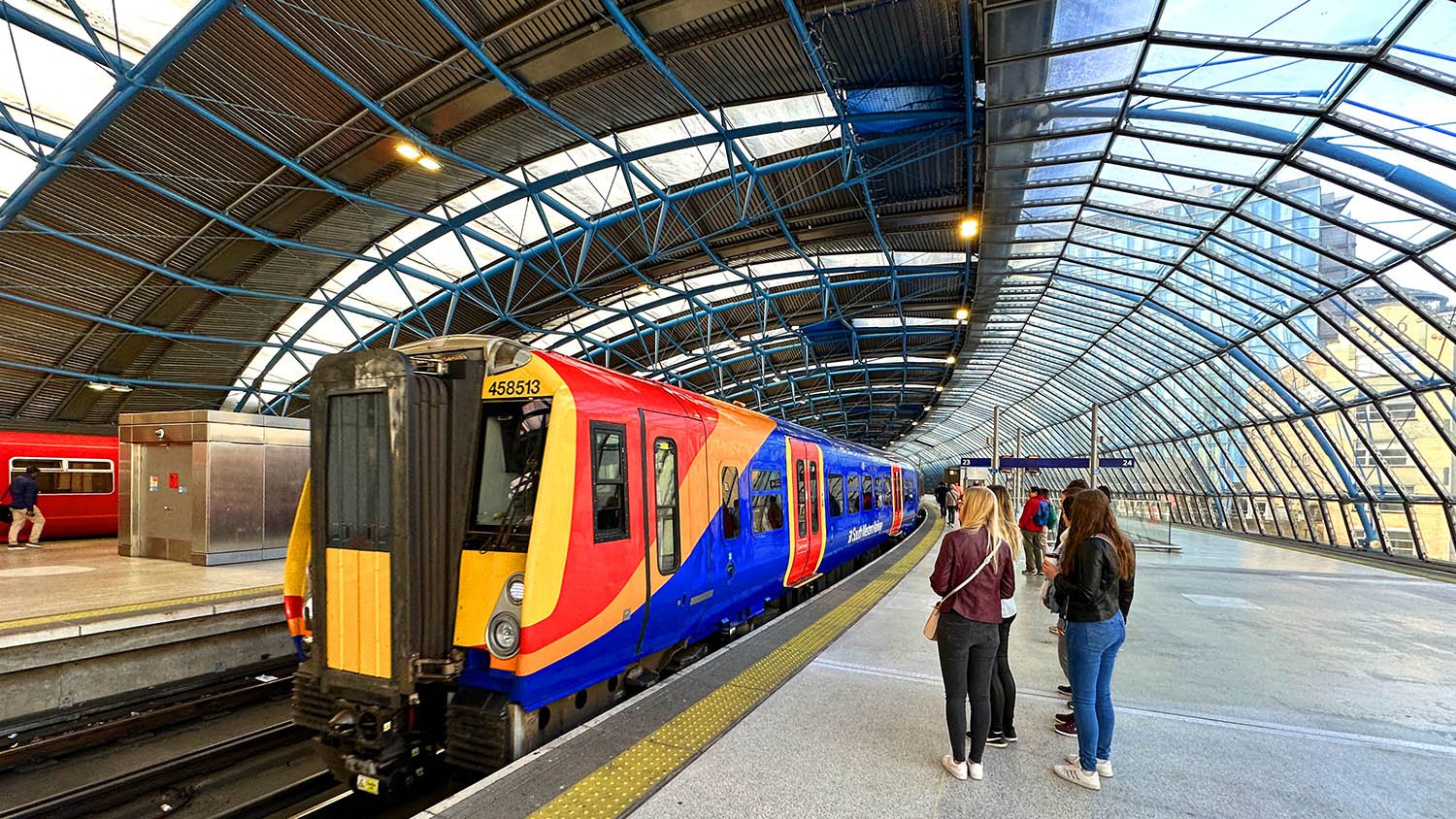






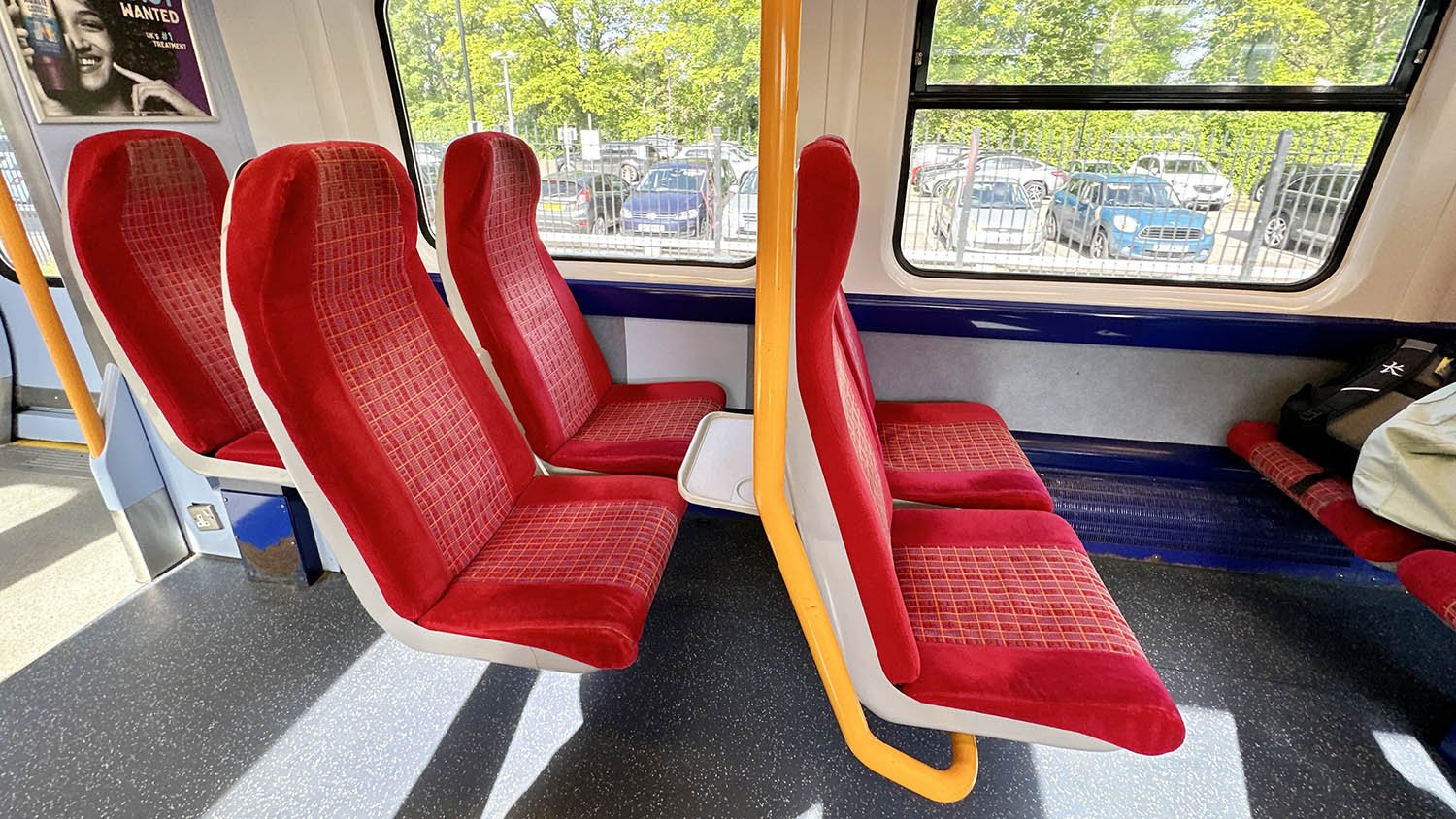
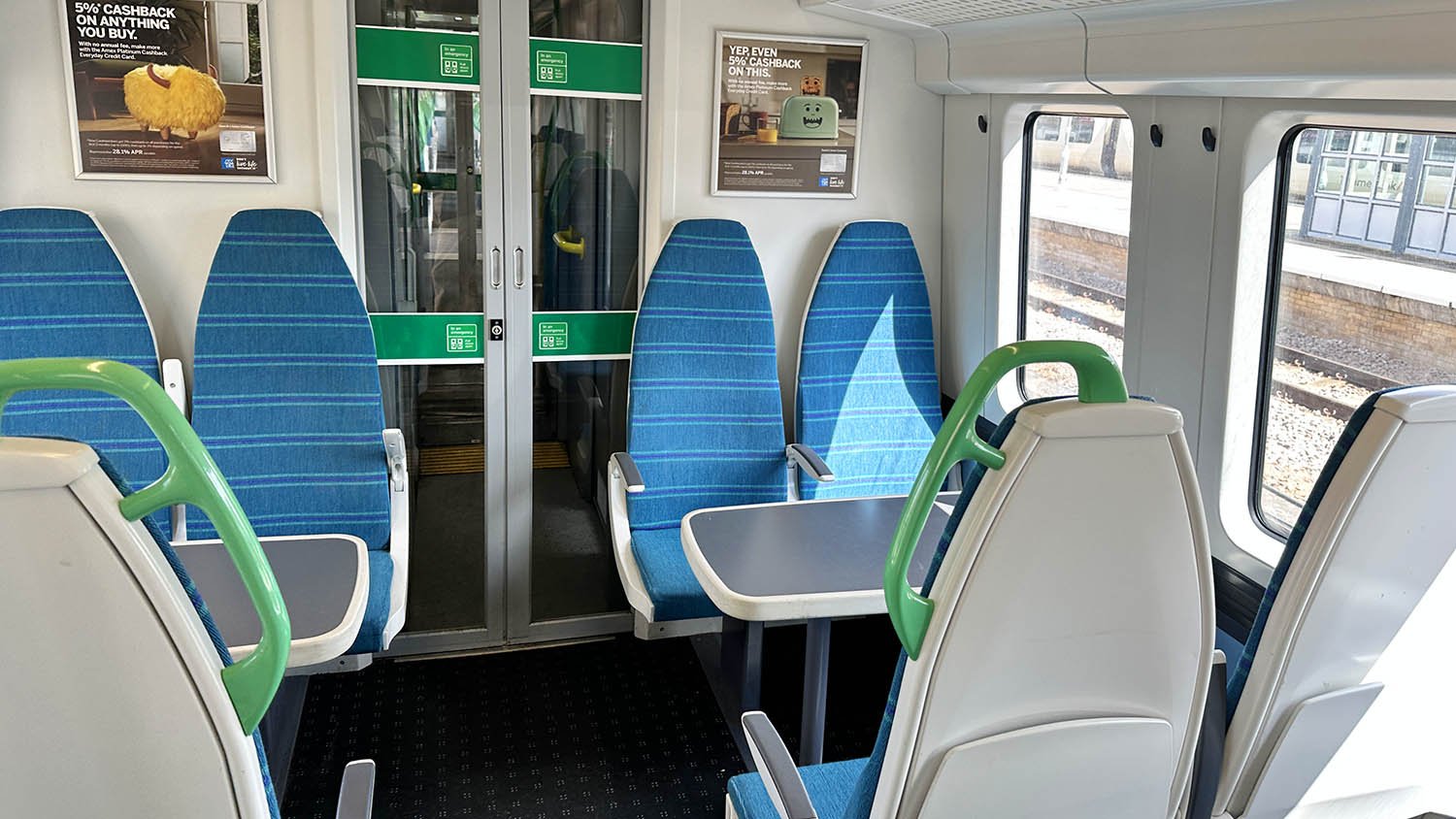


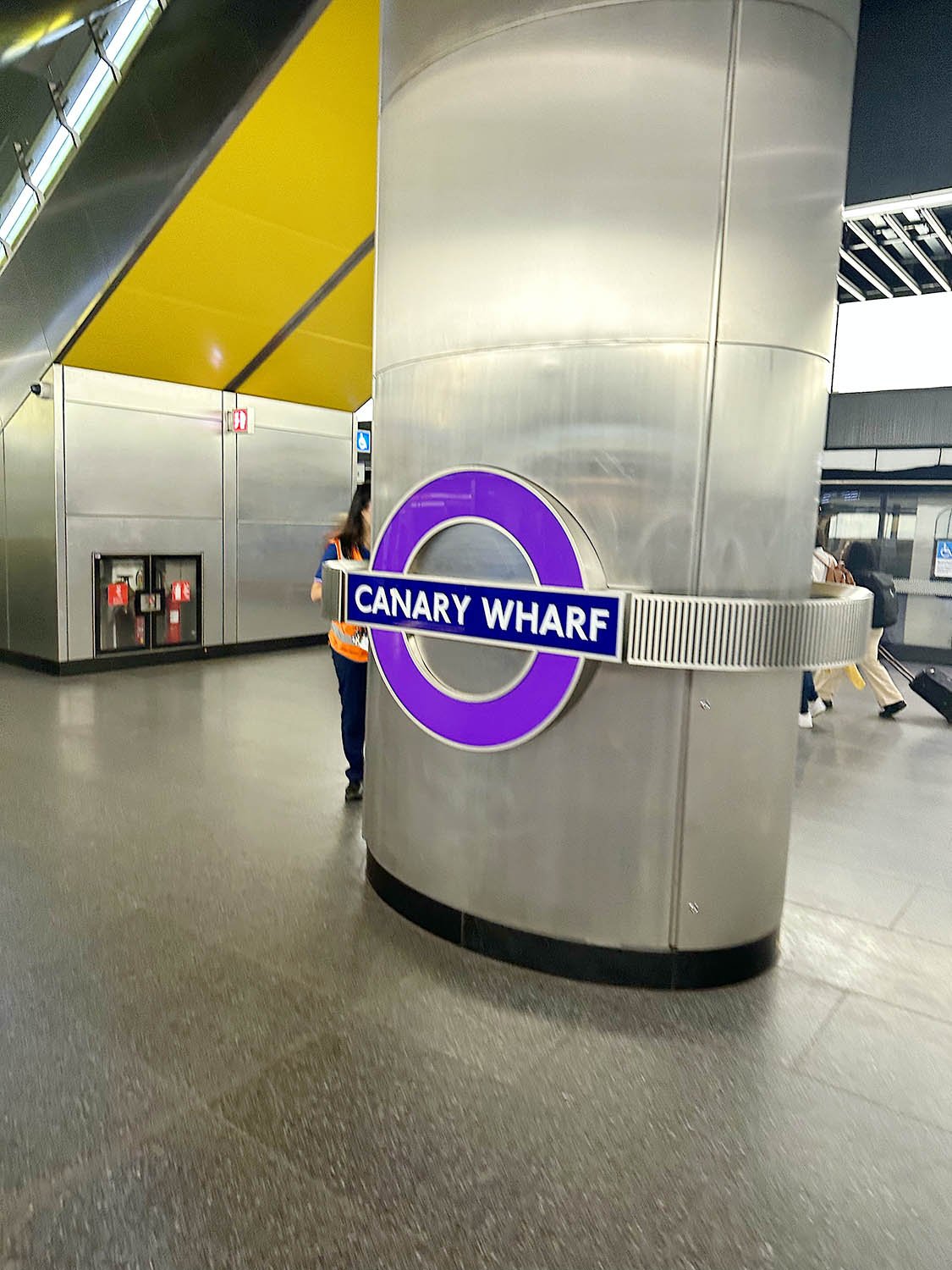
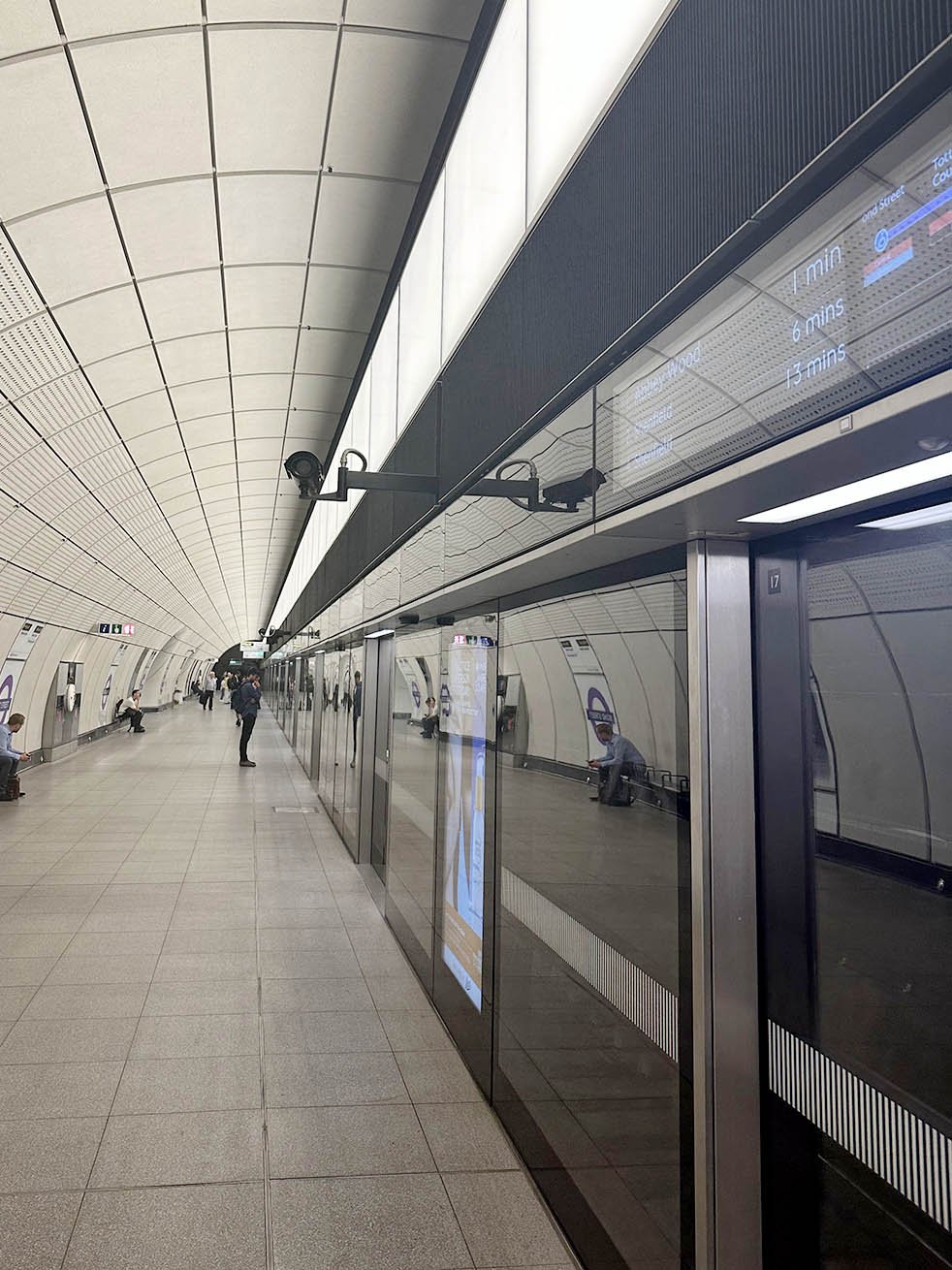
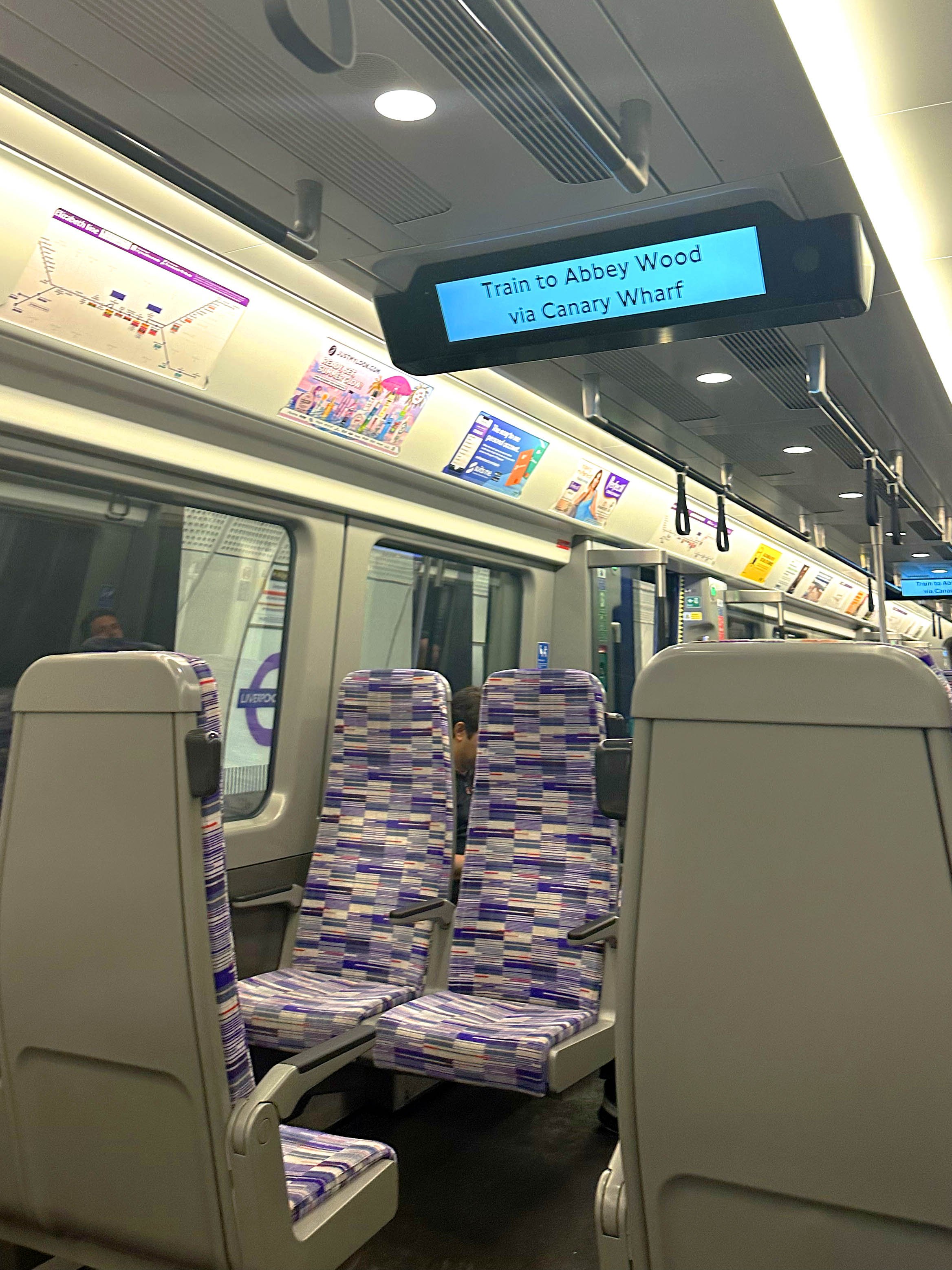



















Westminster Abbey is a uniquely historic site in London and a fascinating place to visit.
A royal church with over a thousand years of history, the Abbey is probably the most famous place of worship in the world, and the center of many national events and celebrations.